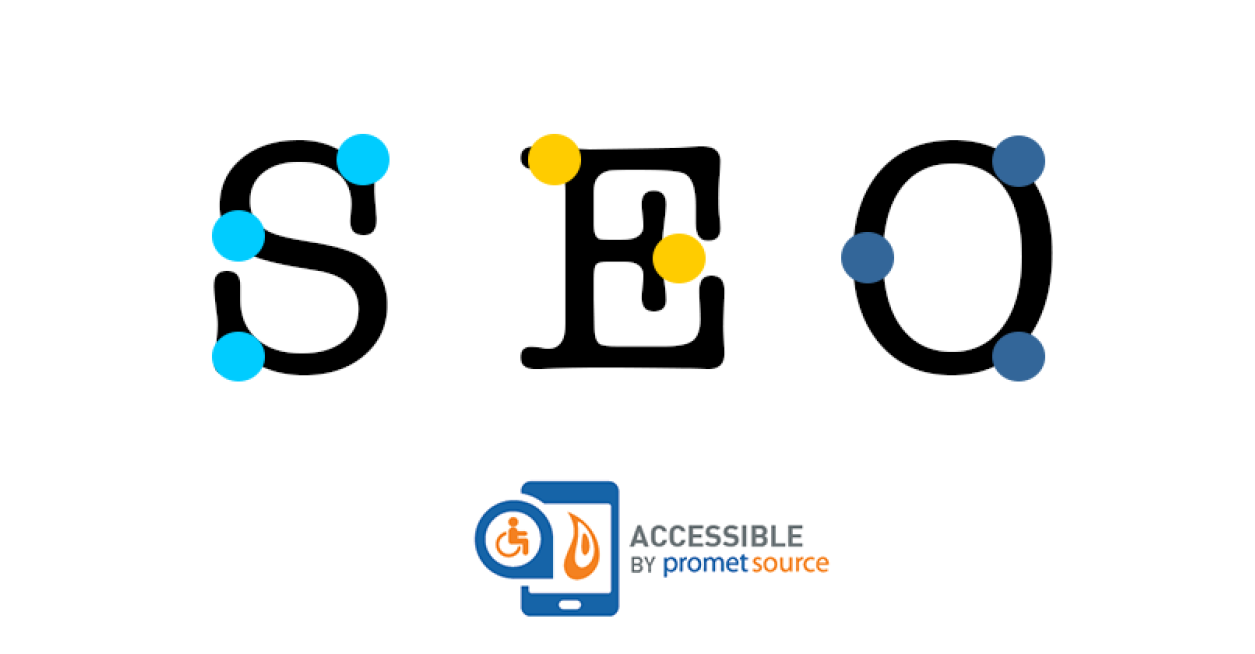Web Accessibility Compliance Boosts SEO

SEO is about making sites accessible as possible to the search engines. The key steps involved in WCAG compliance serve to enhance SEO.
Recent and abundant evidence that ADA Accessibility enhances SEO, is broadening perspectives on WCAG compliance -- from a complicated and potentially costly requirement, to an excellent opportunity that needs to be accomplished ASAP.
Google as a Gatekeeper
Google has emerged as a gatekeeper within our digitally-driven business climate. If a site doesn’t grab Google’s attention, that means lots of lost traffic. A recent article from Backlinko reported that the top 3 of search results get 54.4% of all clicks, while websites on the second page of Google search results get only .63%.
This means that in the current climate, websites need to be accessible to the major search engines -- just as they need to be accessible to people with disabilities. Structuring a site to align with what Google looks for in determining listing order on a Search Engine Results Page (SERP) is a critical business imperative.
Accessibility and SEO in Alignment
Many of the factors that fuel Search Engine Optimization are also essential for ADA Web accessibility compliance.
Here’s a short list of reasons why and how SEO and ADA web accessibility best practices converge to enhance both objectives:
Google gets it: Great UX equals greater accessibility.
When websites are designed with a high degree of empathy for those who visit the site -- including people with disabilities -- SEO follows. Many metrics pertaining to great user experience have an impact on a site’s search result ranking. Among them: how long it takes a site to load, straightforward navigation, quality content, mobile responsiveness, and internal linking.
Screen readers and search engines both rely on title tags.
Title tags are the first component of a web page that’s read by a screen reader. They’re also essential to a search engine’s ranking of a page and where it appears on the SERP.
Even though title tags don’t appear on the page itself, the title tag appears as the heading of the SERP listing and it’s essential -- for both accessibility and SEO -- that it includes key words that accurately reflect the content on the page.
From the standpoint of visually impaired screen reader users, it’s also important that every page on the site has a distinct title tag.
Search engines also scan alt text.
It’s tempting for content editors to slap in perfunctory alt text. Carefully describing an image for the purpose of helping a visually impaired person to envision it, takes time and thought and descriptive alt text can make or break the user experience for a visually impaired person who relies on a screen reader. At the same time, alt text that weaves in key search terms also serves to enhance SEO.
Meaningful header hierarchies support WCAG and SEO.
Accessibility compliance requires that content follows a logical H1 to H6 header sequence and that headers accurately describe the content that follows. Adherence to a logical content structure serves all users, and in particular, those who have cognitive impairments or rely on a screen reader.
From an SEO standpoint, breaking content up into meaningful pieces of information with headers that incorporate key search terms, is key to SEO and can lead to the content appearing as a featured snippet on a SERP page.
The Big Picture: Web Accessibility Fuels SEO
ADA web accessibility compliance and SEO are two distinct areas of expertise. Fortunately, a sharp focus on one enhances the other. Viewed from another angle, when Google is treated as a distinct user for whom a site needs to be accessible, the result is significant steps toward achieving ADA accessibility.
Looking to continue the conversation on how web accessibility can improve search engine rankings? Contact us.
Other Insights & Resources you may like
Get our newsletter
Alright, so, software ate the world. That happened. Technology is now at the heart of every modern company, and as far as we can tell that isn’t changing. That’s the sitch. Our job is to make it more human.





